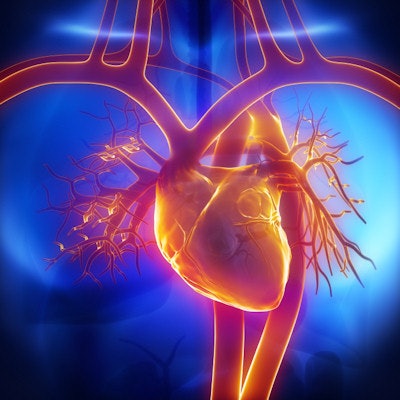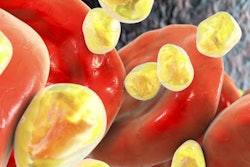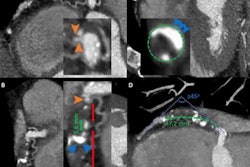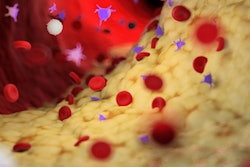
The rate of coronary CT angiography (CCTA) exams performed by radiologists in U.S. hospitals increased by more than 300% between 2010 and 2019, indicating that radiologists could be regaining control of cardiac imaging, according to a September 30 paper in Radiology: Cardiothoracic Imaging.
Why? In part due to reimbursement cuts and technological advances that shifted cardiac imaging procedures from cardiology offices to the hospital, wrote a team led by Dr. Russell Reeves of the Center for Research on Utilization of Imaging Service (CRUISE) at Thomas Jefferson University in Philadelphia.
"Cardiologists are not performing nearly as many myocardial perfusion scans as they were, and most are now being done at hospital outpatient imaging departments," Reeves said in a statement released by the RSNA.
Imaging is a key part of diagnosing heart disease, and both radiologists and cardiologists use it with patients. Over time, two common imaging methods, echocardiography and myocardial perfusion imaging (MPI), have fallen squarely into cardiology's bailiwick, since cardiologists control patients and had the ability to install imaging equipment in their own offices.
But 2005's Deficit Reduction Act had a dramatic effect on office-based cardiac imaging, Reeves said.
"In the early 2000s, cardiology office imaging utilization was skyrocketing," he said. "The changes brought by DRA reversed that trend to where it no longer was lucrative or even feasible for a lot of cardiologists to do imaging in their offices."
The DRA's effects combined with technological advances in exams typically conducted by radiologists -- such as coronary CTA -- contributed to a shift in the locations where cardiac imaging was being conducted. Reeves and colleagues sought to investigate these changes via a study that included data from the 2010-2019 Physician Supplier Procedure Summary files.
The change in service location during the study timeframe was dramatic, the group found: For example, rates of myocardial perfusion imaging in cardiology offices (per 100,000 Medicare patients) fell by 52%, while imaging rates for MPI studies in hospital outpatient departments rose by 71%.
Even more dramatic, however, was the rate of CCTA scans performed by radiologists in hospital outpatient settings, which increased by 355% between 2010 and 2019.
The team did find that rates of cardiology office-based cardiac PET increased 193% over the study period, while rates of the exam performed by radiologists both in offices and in hospitals stayed the same -- which the group attributed to a mix of technological advances, more cardiologist familiarity with interpreting the exams, and financial benefits. Finally, the use of cardiac MRI remained low overall but rose in the hospital setting for both cardiologists (209%) and radiologists (207%).
"[We] continue to observe a shift of cardiac imaging from the cardiologist's office to the hospital outpatient department for nearly all modalities," the group wrote. "Cardiologists continue to dominate almost every aspect of cardiac imaging except for CCTA, where radiologists hold an increasing market share across all sites of service."
The study findings may suggest that there's room for cardiologists and radiologists to work together, the authors noted.
"Radiologist CCTA rates continue to increase, representing a growing opportunity for radiologists to collaborate in cardiac imaging," they concluded.





















